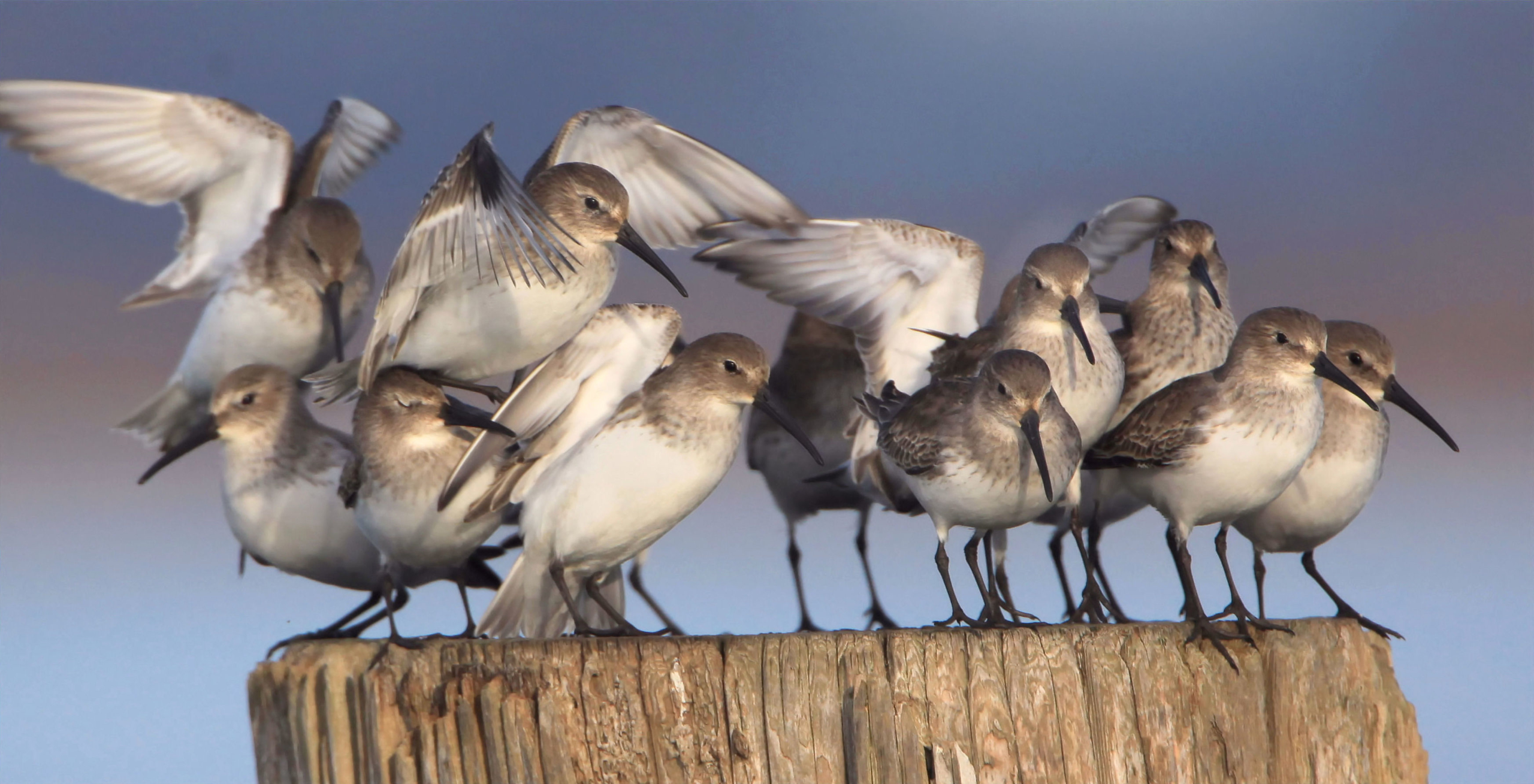About
 Dunlin traffic jam © Nigel Winnu
Dunlin traffic jam © Nigel WinnuAbout
BirdReturns is a flexible, cost-effective wildlife habitat marketplace designed to increase flooded habitats for migratory birds where and when they need it most in ways that deliver multiple benefits for the farmers, wetland managers, and communities who participate. BirdReturns is implemented by the Migratory Bird Conservation Partnership – a strategic partnership between The Nature Conservancy, Audubon California, and Point Blue Conservation Science with the goal of creating a climate-resilient California with thriving bird populations and sustainable water for wildlife and people.
Picture it. You’re traveling cross-country. You’re tired. Hungry. Just looking for a warm meal, hot shower, and a soft pillow to rest your head. But everywhere you look you see: “Closed.” Gas stations, boarded up. Hotels, shuttered.
This is what it can be like for millions of birds that use California’s Central Valley as a critical pit stop to rest and refuel on long migrations or as a winter home. California’s Central Valley used to be a rich wilderness, dotted with lush wetland terrain that made it prime habitat for tens of millions of birds on their yearly migration from the tundra of the Arctic to the shorelines of Mexico, Central America, and South America. Most of those wetlands are gone and along with them the numbers of birds that used to be here. Yet, significant numbers of wetland birds endure because birds have adapted to use flooded farmlands along with the remaining natural wetlands. Unfortunately, the amount of habitat these birds need to rest and refuel at key times of the year is insufficient to support even current populations, let alone recover some of what’s been lost.
History
BirdReturns started in partnership with the rice farmer community of the Sacramento Valley and was built on the science and practices honed by the Migratory Bird Conservation Partnership (MBCP) over the last decade. From the start, it has been well-received by the farming community; since 2014, BirdReturns has worked with over 100 farmers to create over 60,000 acres of high-quality wetland habitat and has generated over $2 million in direct payments to farmers.
And it works. We’ve shown that shorebirds – the group of birds most in need of more flooded habitat in the Central Valley – flock to these fields in greater numbers and diversity than other farmlands (Golet et al. 2018). This has been especially true during drought, when BirdReturns and similar incentive programs can deliver the majority of habitat available for birds across the Valley (Reiter et al.).
Vision
We are far short of meeting the needs of hundreds of thousands of birds, and more frequent and intense droughts are making conditions worse. Our goal now is to build the BirdReturns initiative to a scale by 2030 that, in combination with other private and public programs, can deliver an additional 100,000 acres of flooded habitat for birds during migration and can serve as a rapid response program for maintaining habitat during drought.
To meet this ambitious goal, MBCP is working with the California Ricelands Waterbird Foundation to ensure that their companion program, Bid4Birds, succeeds in rice country, while other BirdReturns habitat markets are created in other agricultural and wetland communities around the Central Valley. We envision a future where there is a coordinated network of marketplaces, each delivering habitat needed in the ways that work best for those lands and those communities – a BirdReturns Network.
Creating More for Birds and People
It’s also not just about saving birds. Flooding farmlands and wetlands provides many other benefits. As droughts become more frequent and severe due to climate change, the need to stretch California’s limited water to multiple uses becomes more imperative. MBCP has been advancing and demonstrating a multi-benefit approach to delivering shallow water habitat for migrating birds in a way that also recharges underground aquifers – something that is vital to shoring up California’s water security and resilience. By carefully and strategically capturing water when it is abundant to create habitat, a suite of additional co-benefits can be achieved that improve the health and resilience of human communities in the valley, including reducing flood risk, improving water and air quality, boosting carbon storage in soils, low-cost weed control for farmers, and recreational benefits for rural communities.
About the Migratory Bird Conservation Partnership
The Nature Conservancy, Audubon California, and Point Blue Conservation Science joined forces ten years ago to form the Migratory Bird Conservation Partnership (MBCP), bringing the considerable strengths of each of our organizations to bear on the most pressing issues facing water management and migratory bird habitat in the Central Valley. Together, we are accelerating innovative conservation work in our communities and creating a new model for collaboration in our field. MBCP is building and implementing the solutions we need to ensure California’s Central Valley becomes climate-resilient, with thriving bird populations and sustainable water for wildlife and people.
MBCP’s 2030 goals are to secure:
- 10,000 additional acres of riparian vegetation
- 5,000 additional acres of seasonal wetlands
- 10,000 additional acres of semi-permanent wetlands
- 120,000 acres of fall and spring flooded agricultural land to support migration and deliver multiple benefits that include groundwater recharge and flood-risk reduction


